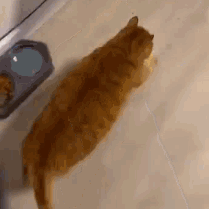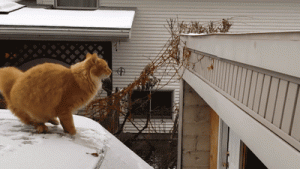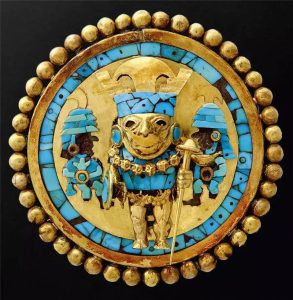In the heat of an impending battle, cats always crouch low, expertly hiding behind cover. Their pupils dilate as they fixate on their prey with excitement and alertness. Then, they begin to wiggle their hips furiously!
-
Why Do Cats Wiggle Their Hips Before Attacking?
① Helps Generate Power: When cats walk, their back legs move alternately. However, when they’re about to pounce, both back legs need to push off simultaneously. Wiggling their hips beforehand helps synchronize the movement of their back legs, allowing for a quicker jump.
② Evaluating the Environment: Before jumping, cats may pace around to assess the ground’s firmness. They check if their back legs will have stable support and if there’s enough space for a safe leap. This behavior is similar to athletes pacing before swimming or running, testing the positioning of their feet.
③ Warming Up: The hip wiggle activates the muscles needed for the jump, sending signals to the corresponding muscle fibers. This is akin to humans warming up before a workout, helping prepare for the next explosive movement.
④ A Sign of Excitement: Animal behaviorists believe that this hip-wiggling is a sign of excitement. Before hunting, dopamine levels rise in cats, building motivation and prompting them to take action. At this moment, the hip wiggle helps release some energy in preparation for the attack.

-
Is Hip Wiggling an Instinct?
Zoologists have observed:
① Cats under three weeks old don’t wiggle their hips. However, once kittens are older than three weeks and start learning to hunt from their mother, they begin to display this behavior.
② Most big cats, such as lions and tigers, also exhibit this hip-twitching behavior before leaping. This suggests that the hip wiggle before an attack is a learned behavior influenced by both innate instincts and experience.





